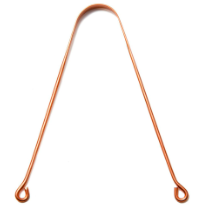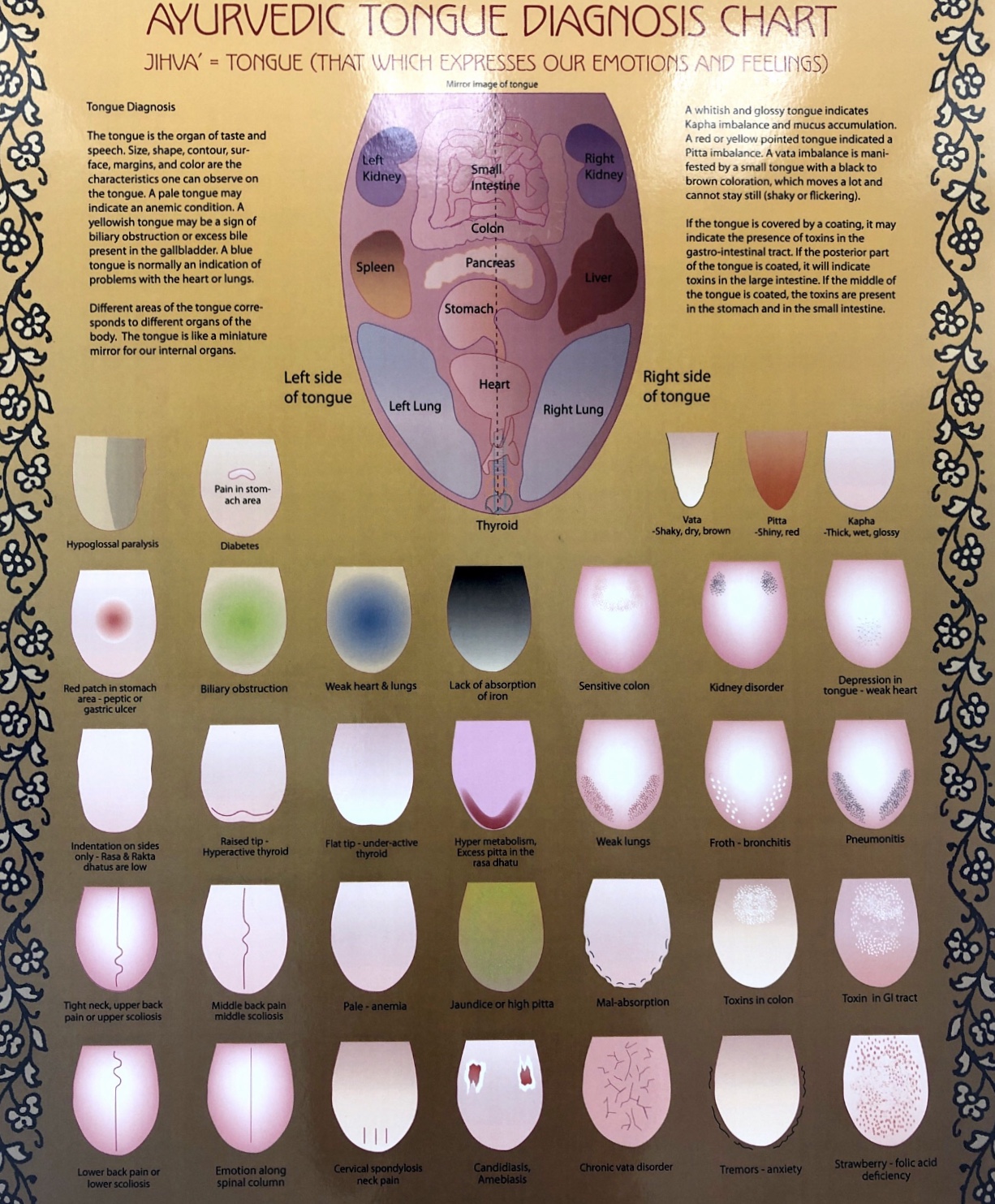 What is Tongue Scraping?
What is Tongue Scraping?
Tongue scraping, known as Jihwa Prakshalana, is an ancient Ayurvedic practice which traditionally uses a slightly rounded tool made from copper, silver, gold, or stainless steel (Here are two we love!). It has been used to scrape off build up of bacteria, dead cells, fungi and toxins formed on the tongue overnight. Keep reading to find out the benefits of tongue scraping and how you can implement this practice in your daily life!
Benefits of Tongue scraping:
- Tongue scraping can help you better distinguish the difference between sweet, bitter, sour, salty sensations.
- It improves your sense of taste. Who doesn’t want to improve their sense of taste?
- Removal of Mutans streptococci and Lactobacilli bacteria. These are known to cause dental plaques and halitosis. In a 2004 study, tongue scraping has been evidently proven more effective than tongue brushing for removing odor-causing bacteria on tongue.
- While brushing is key to dental and oral health, brushing doesn’t actually remove the toxins from the surface of the tongue as well as tongue scraping does. The most important would be the improvement in overall health.
How and when to do Tongue Scraping?
The best time to do tongue scraping is in the morning, empty stomach right after you brush, as it would remove the overnight build up (also known as ‘Ama’ in Ayurveda). According to Ayurveda, it is theorized that while we are asleep, our digestive system accumulates unwanted toxins on the surface of our tongue, which is a reflection of total toxic burden in the body (see this Tongue Map from Dr Vasant Lad’s Ayurvedic Institute). If these toxins aren’t flushed out or removed, they get reabsorbed, compromising our immune system and leading to digestive ailments and respiratory woes.
- First we recommend oil pulling, followed by brushing your teeth and rinsing your mouth. Now you are ready to tongue scrape!
- Stand in front of the mirror and stick your tongue out.
- Place the tongue scraper in the middle of the tongue.
- Ideally you want to place the scraper at the back of the Tongue ( the farther the better) but this can induce the gag reflex. So, in the beginning start at the middle of the tongue and then gradually move further back as you start to get more comfortable with the practice.
- Apply a little bit of pressure and move the tongue scraper toward the tip of the tongue. Never scrape backwards (from tip to back of the tongue)
- After every scrape, wash the debris off with water. Make sure to wash it thoroughly before scraping again.
- You can scrape 1-2 times daily. Do not vigorously scrape as it can be painful.
- Important: Make sure sure your tongue scraper is free of uneven and uneven edges so you do not cut the surface of your tongue.
- Enjoy your fresh breath and newly heightened sense of taste!
Get Personalized Functional Ayurveda™
Learn more about Functional Ayurveda™ in New Jersey with Dr. Minal Vazirani on the home page.
References:
https://www.ncbi.nlm.nih.gov/pubmed/15341360
https://www.ayurveda.com/resources/articles/tongue-and-corresponding-organ-locations
https://onlinelibrary.wiley.com/doi/abs/10.1111/j.0303-6979.2004.00507.x
Tell us what you think.
Dr. Minal Vazirani

CONTACT INFORMATION
844.543.2537 (1.844.5HEALER)
info@ihwa-nj.com
OFFICE LOCATIONS
112 Town Center Drive Suite 201
Warren, NJ 07059
200 South Orange Ave Suite 107
Livingston, NJ 07039
Dr. V. is a warm and compassionate individual. She is well versed in several forms of medicine. That is why I like her because she can see things from different angles. She is very wise for her years.
Always Positive!! Integrative Medicine has saved me! Thank You Dr. Vazirani!!
Dr. Vazirani is very pleasant, knowledgeable and always has the interest of the patient. I am very happy to be under her care and would recommend her to all my friends
Are you looking for a Triple Board Certified Doctor who gets Integrative, Functional, & Ayurvedic Medicine in NJ?
Message us or complete our intake form to get started with Dr. Vazirani.

